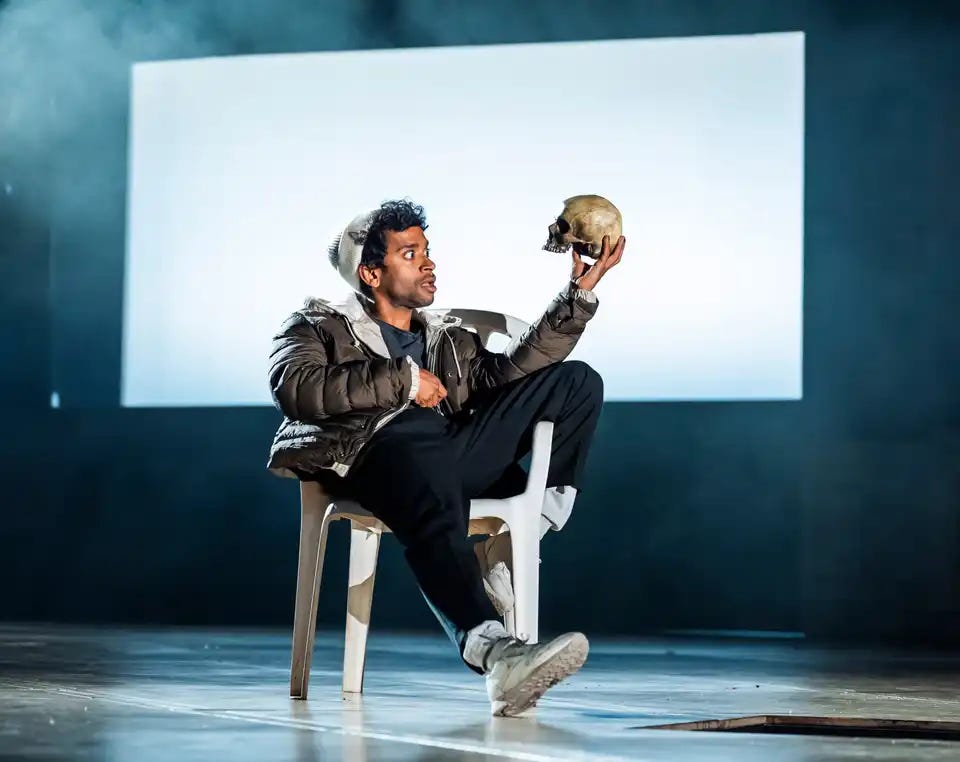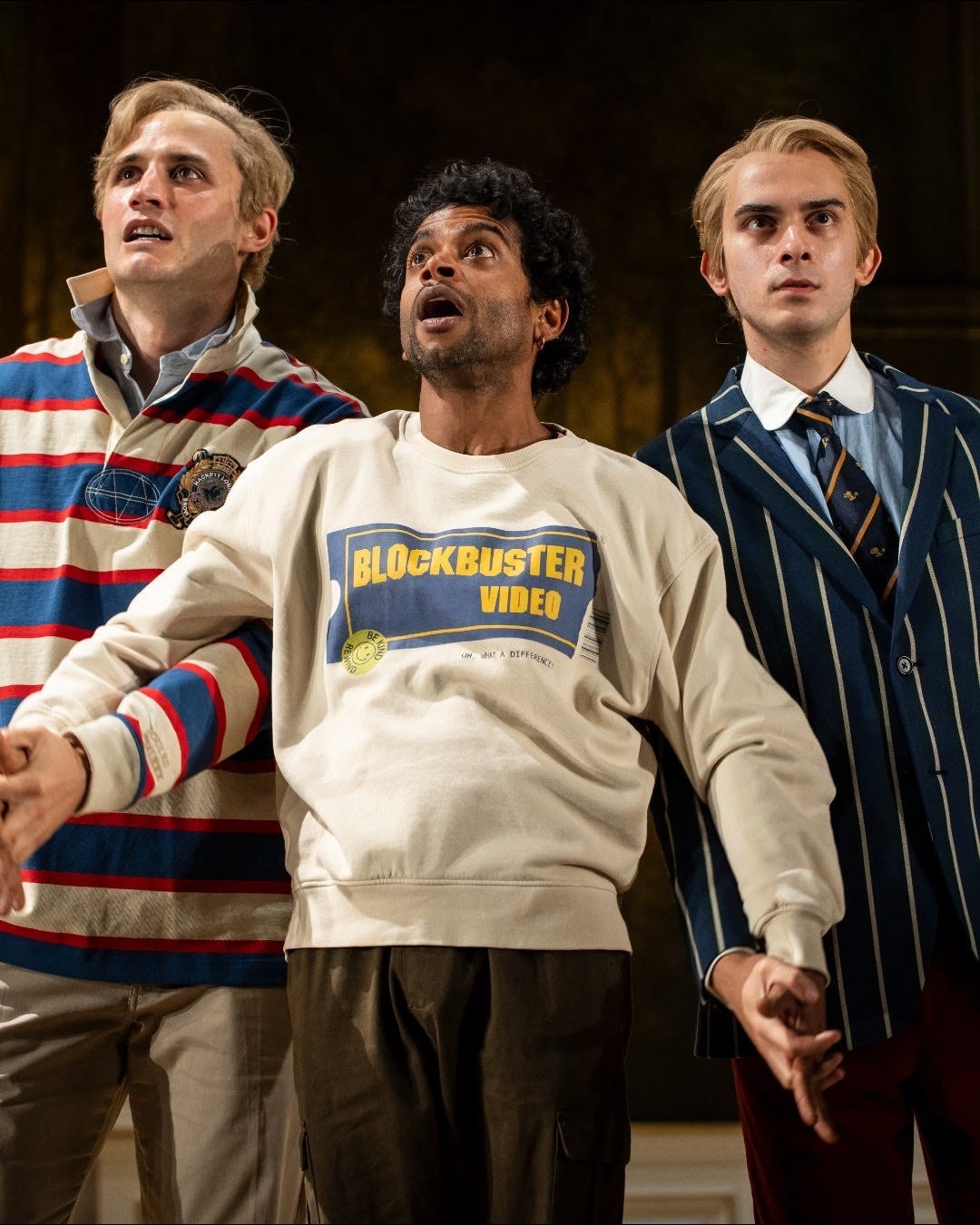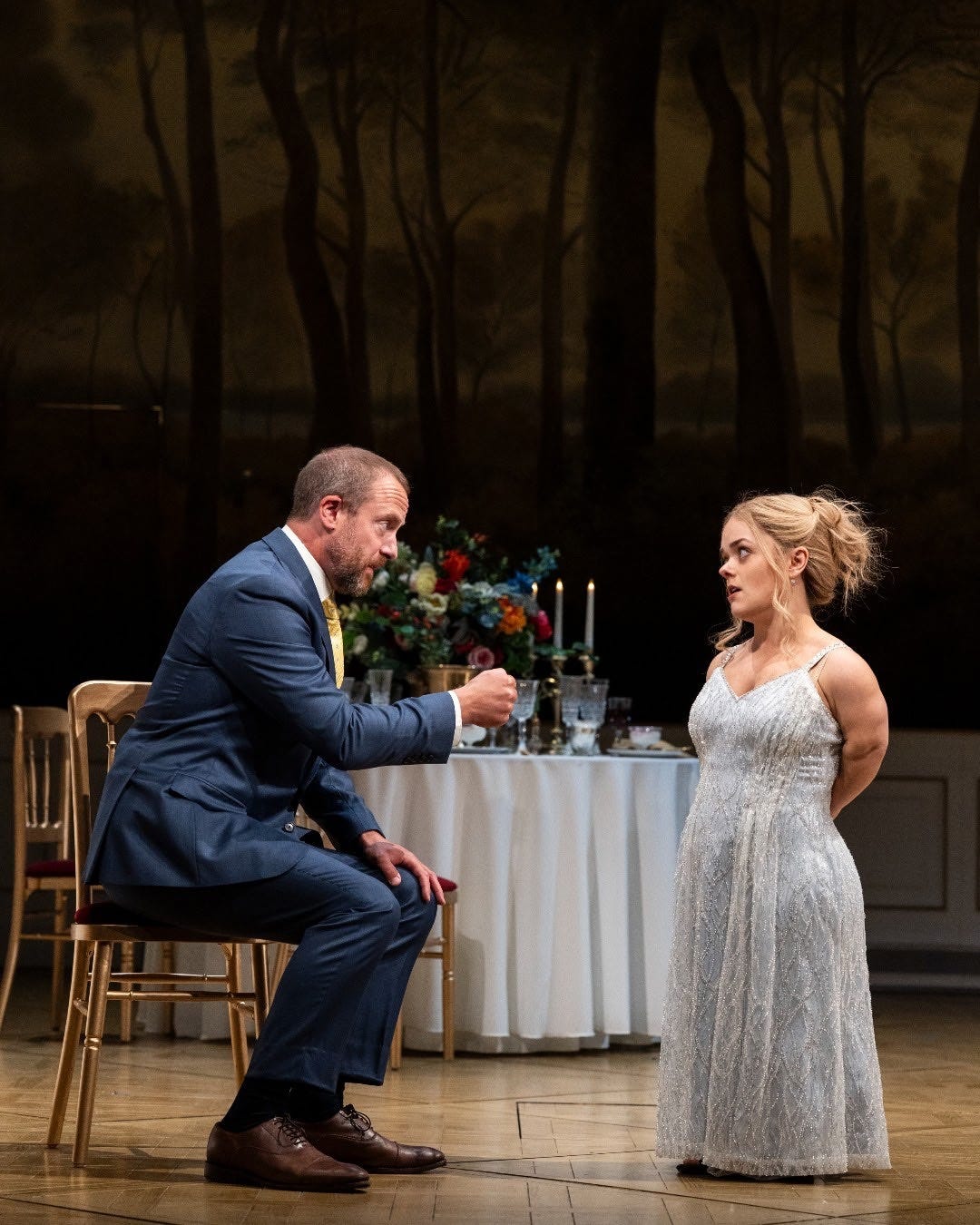Hamlet 💀
For all its spectacle and wit, Hastie’s Hamlet leaves us with admiration rather than devastation.
Andrew Scott has ruined my life. His unforgettable fresh-minted Hamlet was mercurial, devastating, and left a profound mark on me.
Bernard Shaw defined Hamlet brilliantly: his passions are those that have produced philosophy, poetry, art, and statecraft—not merely weddings, coroners’ inquests, and executions.
Any production of Hamlet stands or falls by its prince, one of the most complex characters in dramatic literature. The real problem arises when the weakest link in Hamlet is Hamlet himself.
Alas, this production’s prince is flat, unfocused, and ultimately forgettable.
Robert Hastie’s staging arrives freighted with significance: it is a showcase for Olivier Award-winner Hiran Abeysekera (Life of Pi) in the title role, and an early statement of intent under new artistic director Indhu Rubasingham. What emerges is visually striking, often witty, occasionally inspired—but muffled when it comes to the emotional force of Shakespeare’s tragedy.
Most of the action unfolds on sparse Ben Stones’s single set: a cavernous, palatial hall, part banqueting chamber, part mausoleum. Renaissance angels and cherubs gaze down from the walls, which double as camouflage for entrances. It is a striking backdrop—eerie and atmospheric in torchlit ghost scenes, aided by Jessica Hung Han Yun’s shadow-drenched lighting design. But if it dazzles, it never quite becomes the prison of Elsinore. The same applies to the production itself: atmosphere without tension, style without substance.
Abeysekera’s Hamlet enters not as a tortured philosopher but as a smartly dressed, forlorn figure who punctures his gloom with humour and acrobatic energy—childlike leaps, sly asides, bursts of sardonic wit. He queens out with Rosencrantz and Guildenstern, grabbing their arse; his febrile, excitable prince feels modern, ADHD, full of nervous charisma.
He darts in and out of the action, sometimes narrating his own story, and there is freshness in his conversational, ironic delivery.
Yet that same energy undermines the great soliloquies. “To be or not to be?” becomes throwaway, tossed off with a finger-pistol gesture and distracted by a T-shirt gag. The anguish is swallowed. Hamlet’s defining hesitancy—the struggle between thought and action—never lands.
If Abeysekera’s prince eludes us, Francesca Mills’s Ophelia seizes the heart of the play. Mills commands the stage with a presence at once playful, tender, and moving.
She brings clarity, warmth, and humour to the early scenes, then fragility to Ophelia’s madness; the rest of the production, however, fails to coalesce around her. Her performance is rooted in real emotion, providing the rare intimacy this production otherwise lacks. The estranged lovers’ chemistry—strained, touching, doomed—offers flashes of genuine poignancy. It has integrity.
Alas, many of the strong actors in the cast seem either miscast or uncertain of the production’s vibe. Performances are uneven. Alistair Petrie’s Claudius has cool patrician cunning but zero menace. Ayesha Dharker’s Gertrude feels oddly muted. Geoffrey Streatfeild delivers a comic, earnest Polonius, dispatched absurdly by gunshot. Rosencrantz and Guildenstern are well-pitched as interchangeable lackeys, and Ryan Ellsworth makes an effective, spectral Ghost. The “play-within-the-play,” with its microphones and splattered paint, rib Jamie Lloyd’s attempts at minimalism.
There are flashes of insight. The production is alert to the play’s themes of theatre itself: Hamlet dons a ruff, a player sports a wry Blockbuster Video Store tee, the staging toys with blurring performance and reality. Abeysekera’s sardonic humour gives Hamlet a wry awareness of his place in history, even nodding to the National’s own 1963 Hamlet. Yet these meta-theatrical gestures substitute cleverness for emotional connection.
Anyway. Abeysekera’s opportunity to play Hamlet matters—he is the first Asian actor to portray the Danish prince at the National - it’s the role every young actor dreams of, the benchmark against which they are measured. But this Hamlet enters a crowded field: in just the past few years, Luke Thallon, Radiohead’s Thom Yorke, Sir Ian McKellen, and, only weeks ago, Giles Terera have each donned the black suit, each bringing weight and definition. We have also had Fat Ham in Stratford Upon Avon.
By contrast, Hastie’s production feels oddly underpowered and uneven. What it lacks, above all, is weight. Shakespeare’s tragedy is shadowed by death, driven by grief, alive with existential terror. Here, the questions are raised but skimmed over; the grief muffled. We are intrigued, but rarely moved.
Francesca Mills alone provides the deep emotional tremor the production so sorely needs. Too often, what’s missing is a sense of emotional and psychological depth.
Hamlet runs at the National Theatre until November 25.





